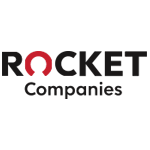Is working for a Virtual Reality company like working in “The Matrix?”
When I tell people that I’m a project manager for a Virtual Reality company, the most frequent follow up question is, “Do you work in ‘The Matrix’?” I may not plug into a simulated reality machine at the beginning of each day, but creating new Virtual Reality experiences at 3D Cloud gets close. Every day, I get the opportunity to work with new Virtual Reality devices and create different immersive environments. But none of it happens instantaneously. Planning and collaboration are at the heart of every VR experience that we create.
Not “The Matrix”: the 4 stages of a real Virtual Reality project
In “The Matrix,” characters learn how to fly helicopters in seconds without training. Real Virtual Reality projects take a lot of planning and testing. As a project manager working with a new technology like Virtual Reality, I use several techniques to adapt, move things forward, and keep projects on track. While each project is different, the process of a Virtual Reality project has four stages with repeatable steps that lead to the successful launch of new experiences.
1. Planning and initiation (sounds boring, but it’s awesome)
To create a project plan, I determine what the project will entail, schedule progress milestones and due dates, identify the team members needed, and outline the scope of the project. Planning for VR projects can be challenging at times because of the diversity of content. For instance, one project may be building an app to help users create a new kitchen or deck for the house, another app may display prosthetics for amputees, and a third might be a sales tool for a pharmaceutical company.
As a VR project manager, I also have to stay on top of the latest Virtual Reality trends as well as becoming knowledgeable about clients’ products. Project managers are ultimately responsible for the performance and execution of the project. And while it may be challenging, it is also extremely rewarding; working on VR projects is never boring.
This stage includes:
- Research
- Scheduling
- Budget allocation
- Resource planning
- Identifying risks
- Building a team
2. Defining requirements
Beyond gaming, Virtual Reality and Augmented Reality are transforming activities ranging from designing your kitchen remodel to visual product display in retail. Many people associate VR with gaming, but Virtual Reality headsets can be useful in almost any industry and business today. Whatever the industry, it’s important to make sure that project objectives are established, the correct teams are assembled, and major tasks and responsibilities are assigned. The 3D Cloud team uses agile development, which includes iterative stages as we move through requirements, development, and launch.
This stage includes:
- Clarifying goals
- Agreeing on specifications
- Listing tasks
- Assigning responsibilities
3. Project execution
The execution of a project is quite possibly the most important stage. You can spend countless hours planning and prepping for a project but if it is not executed properly, the entire project is a fail. Virtual Reality adds a layer of complexity to the overall execution of a project because it is so new, with lots of uncharted territory. This means you need a combination of detailed planning and a nimble, fearless team. I can promise that you will encounter obstacles and make mistakes, but as long as you learn from those things and continue moving forward, you will succeed.
This stage includes:
- User experience planning and user interface design
- 3D design and development
- Virtual Reality development and mobile development
- Weekly project status updates
- Quality assurance
- User acceptance testing
4. Launch and iteration
Project planning, execution, and testing all culminate with a successful launch, but this is just the beginning. Once the initial experience is launched and reviewed with the client, the user data capture and ongoing iteration starts. With any software project, you should take time during the initial stages to plan for the user data you’ll collect to measure the success of your VR experience. This essential information gives you the tools you need to be able to improve that project over time based on the ways users are navigating through the experience.
This stage includes:
- Project deployment
- Client training
- Post-project review and feedback
- Measurement and reporting
- Iteration
Creating mindblowing experiences, step by step
We’re not living with the Virtual Reality environments from “The Matrix” yet, but rest assured that they will be built with a process like this. In new and evolving fields like Virtual Reality marketing, the simple framework of agile methodology shines. The key to this kind of project planning is a basic structure that is repeatable, allowing your team to be focused and flexible, collaborating on obstacles and finding the most efficient ways to meet their goals. With a process like this, even the most complex and unchartable experiences become within your reach.










